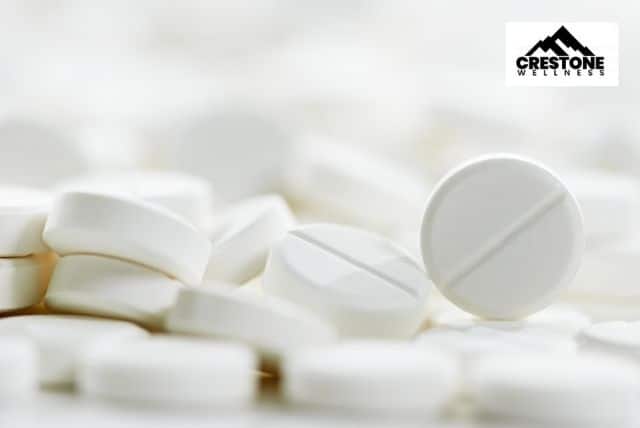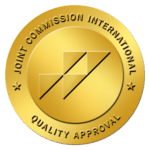Codeine is one of many opioid drugs prescribed to patients to manage their mild or moderately severe pain. It’s supposed to be used only for short-term treatment because it’s even a low dosage is very potent and easily abused. Still, it doesn’t prevent people from codeine addiction. Some health officials believe it’s completely out of control.
The United States government lists codeine as a Schedule II narcotic, so it’s in the same class as Oxycodone (Oxycontin) and other opioid pain relievers. Generally, users take it as a pill, which is combined with acetaminophen. Some use it as a cough syrup. This drug’s classification can change depending on other drugs used. Therefore, it might even be a Schedule V or Schedule III drug.

Both in the United States and abroad, codeine-based cough drinks are becoming popular. They’re often referred to as purple drank or lean, which leads young adults and teens to consume the prescription drug in unsafe amounts. A report from 2018 indicated that many students abuse cold and cough medication to get high, with these numbers:
- 3.4 percent – 12th-graders
- 3.3 percent – 10th-graders
- 2.8 percent – 8th-graders
One of the top medications is codeine, the primary ingredient in the homemade “sizzurp.” This drink is often served in a plastic or foam cup and is laced with that opioid and other promethazine-based medications and antihistamines. Soda and hard candies are often added to make the beverage sweeter. It’s a lethal cocktail that hooks people from various walks of life, including athletes, singers, and rappers. The purple drink is an anesthetic without life support.
As with other medications, codeine should only be used as prescribed and with great care. It’s available legally through a prescription by a reputable and licensed doctor. If you use it any other way, it’s illegal.
Those who do have a prescription from a healthcare provider for codeine might find themselves developing high tolerance levels to it. A higher codeine dosage offers mind-alternating effects, so it’s easy to abuse.
Recreational users of codeine like the calming and euphoric effects it brings. Spinal cord pain is often reduced when you take it. You might feel it working in about 10 minutes, though some people must wait half an hour. Even though it’s fast-acting, it lasts between four and six hours, based on the dose size.
How Codeine Works

As with other drugs in the class, codeine can bind to the opioid receptors in the central nervous system and brain, which stimulates various parts of the body. Whenever it stimulates the brain, users often feel relaxation, pleasurable sensations, and contentment. The limbic system makes that possible because this part of the brain affects behavioral and emotional responses.
When you abuse it for too long, opioid addiction is likely to occur. People who wish to come off of the drug and start recovery might need professional help to be successful. Crestone Detox Austin – Alcohol & Drug Rehab can assist, so please call today to get started.

What Are Common Codeine Withdrawal Symptoms?

Those who use codeine regularly might suffer from codeine withdrawal if they stop using the medication suddenly or try to cut back. If you notice changes after interrupting your codeine routine, this is likely the problem. Severe withdrawal symptoms can appear while the brain and body try to adjust to not having these prescription opioids like they once did.
Overall, the process is uncomfortable, and the symptoms might affect your emotional state, mind, and body.
Physical Symptoms Include:
The physical symptoms you might experience could include:
- Fatigue
- Sweating
- Teary and watery eyes
- Runny nose
- Rashes
- Muscle aches
- Nausea (vomiting or diarrhea)
- Headaches
- Fever
- Excessive yawning
- Dry mouth
- Dehydration
- Rapid heartbeat
- Blood pressure changes
- Abdominal pain
Psychological Symptoms Include:
The psychological codeine withdrawal symptoms can include:
- Restlessness
- Mood swings
- Insomnia
- Hallucinations
- Disorientation
- Depression
- Confusion
- Mild anxiety
- Agitation
Potentially Severe Symptoms
Sometimes, the opioid withdrawal symptoms from opioid use disorder can lead to serious medical complications, and you should not ignore those. If you are experiencing any of the following issues related to opioid withdrawal syndrome, get medical attention by going to the emergency room or calling 9-1-1:
- Shortness of breath
- Seizure
- Rapid heartbeat (might lead to heart failure)
- Irregular heartbeat
- High blood pressure
- Chest pain
- Suicidal thoughts
- Psychosis
- Thoughts of homicide
The Stages for Codeine Withdrawal
Opioid withdrawal doesn’t feel or look the same for each person. There are factors unique to everyone that shapes the timeline and how the symptoms might feel. They include:
- How long they used codeine
- If other substances (alcohol and other drugs) were used with codeine
- Drug tolerance
- Codeine dosage taken
- The person’s health, age, lifestyle, and medical history
Those who want to stop using codeine might wonder what happens during codeine withdrawal. You should expect your acute opioid withdrawal symptoms to start just a few hours after your last dose.

Generally, codeine withdrawal happens in two phases. During the first, your symptoms appear after a few hours of that last dose you took. However, the second phase indicates that other symptoms appear while your body tries to heal and resume its normal functionality.
The entire process can take up to 10 days, but the intensity and length depend on the above factors. Here’s a generalized outline of what you might experience:
Days One to Four

Just a few hours after your last dose of codeine, you might experience flu-like symptoms. They include cramps, diarrhea, insomnia, and nausea.
You may also sweat a lot, have dilated pupils, and get headaches more frequently. Some people’s restless leg syndrome is aggravated, or they may have goosebumps and feel depressed. Likewise, those may not be the only withdrawal symptoms you deal with.
Days Five to Seven

During this stage, the physical withdrawal symptoms begin to wear off. However, you must drink more water than normal to avoid dehydration. Along with depression, you may experience other mental health problems and emotional disturbances, such as insomnia, irritability, and anxiety.
Days Eight and Later

Typically, your codeine withdrawal ends at this stage, though you may still experience emotional and mental health challenges. The codeine cravings might continue for years or months.
Once substance abuse ends, you’ll likely get PAWS (Post-Acute Withdrawal Syndrome). This leads to shame, guilt, fatigue, low confidence, anxiety, and thoughts of suicide (in more severe cases). If you’re a recovering addict and find it hard to manage these symptoms, it’s best to get medical help and advice during and after the treatment.
How a Codeine Detox Might Help
Sometimes, people want to stop using codeine and other opioids, and they try to do it without medical help by going “cold turkey.” This isn’t the best solution because it’s not safe. Likewise, it’s harder to prevent relapse, returning to using the drug again with potentially deadly results.
Medical detox is the best choice because these facilities specialize in treating your substance use disorder using evidence-based methods and guidance. You can manage your codeine withdrawal symptoms and come off the drug correctly and with the right results.
During an opiate withdrawal, medical professionals might use IV (intravenous) therapy to lower your dosage gradually to ease off of it. It’s called tapering and requires assistance. If you taper too quickly, you might relapse or deal with uncomfortable symptoms.
Typically, a codeine detox requires you to take medication to ensure the process is easier. Plus, someone is there to monitor your overall health and vital signs. Professionals are available 24/7 to meet your needs. You don’t have to wait for the condition to worsen before seeking treatment; visit a detox facility before you decide to quit for a better chance at recovery.
Overall, at-home treatments are highly discouraged because relapse and dangerous symptoms can result. If you are going through withdrawal and have used the drug for a while, it’s best to get treatment from a reputable facility like Crestone Detox Austin – Alcohol & Drug Rehab because we’re equipped to help you end codeine use correctly and safely.
What’s the Next Addiction Treatment Step?
Medical detox is only part of the recovery process. The National Institute on Drug Abuse states that this alone isn’t enough to treat frequent and long-term codeine abuse. Depending on how severe your situation is, treatment might be 30 to 90 days in length. It’s best to work with medical professionals in an inpatient or residential setting.
Generally, a medical professional assess your physical and mental health needs, which determines what course of action you should take. Residential care uses 24-hour monitoring in a distraction-free place to help you understand your addiction and address everything.
Sometimes, partial hospitalization is used with an outpatient program. These help you recover with detox to avoid severe or codeine withdrawal symptoms while going to work and enjoying your life.
After Drug Addiction Treatment Completion
Once you finish your medical detox and an outpatient program, you might join alumni programs to speak to other like-minded people who already understand your journey. These individuals are there to encourage you to create and pursue goals.
Codeine withdrawal doesn’t have to overtake your life, but it’s important to do it the right way to avoid setbacks or more health complications.
Why Work with Crestone
Codeine addiction is more common than most people think. It’s dangerous to come off the drug because you might experience severe codeine withdrawal symptoms. Your best bet is to work with a treatment center like Crestone Detox Austin – Alcohol & Drug Rehab. We have the tools, equipment, and techniques necessary to make it easier for you.
Please call to speak with the medical director about your opioid use disorder today. We want to help you overcome your addiction and live drug-free without the symptoms of codeine in your system.







